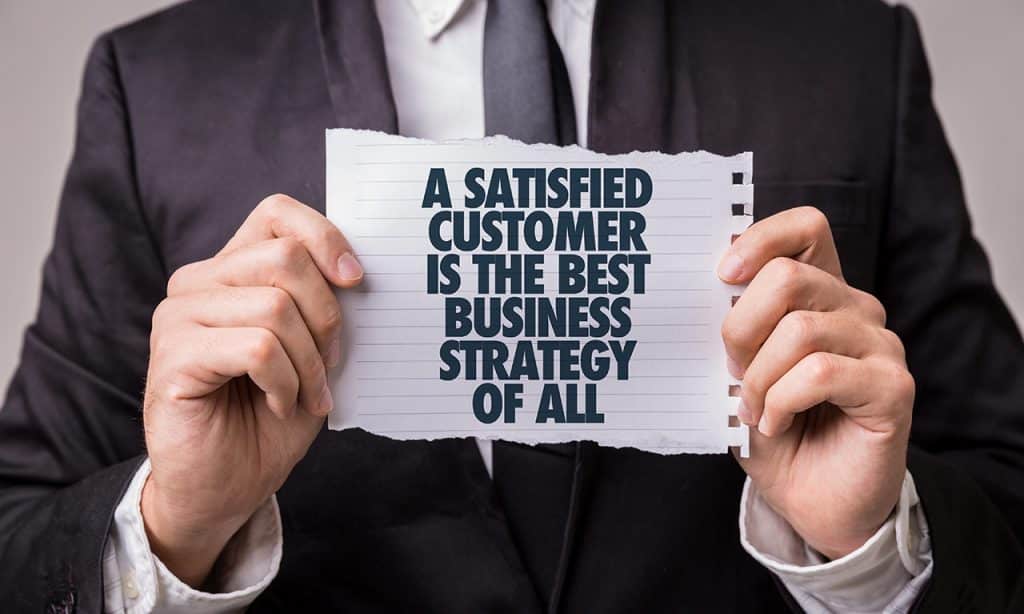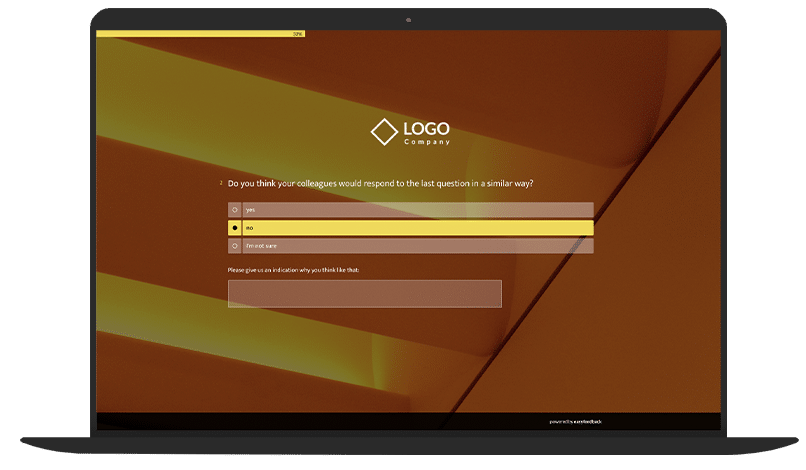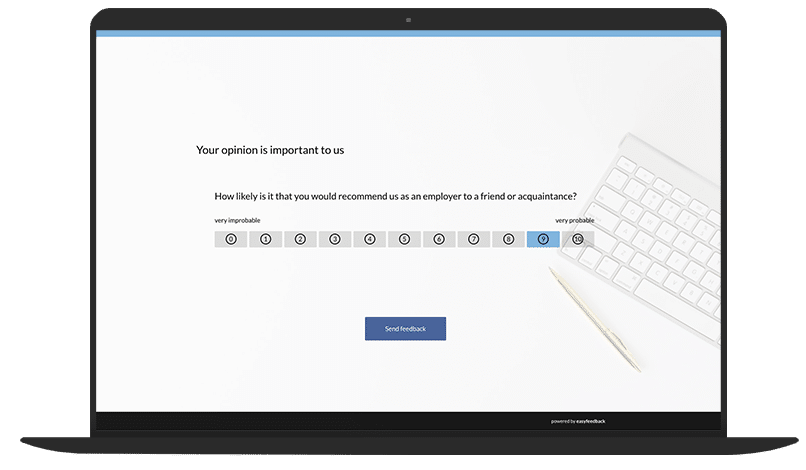What is Employee Experience (EX)?
In a nutshell, the employee experience encompasses all experiences and experiences that a (potential) employee has along his or her journey with your company.
The journey, and thus the experience, begins with the first contact with the company and extends all the way to the employee’s departure.
Based on his or her experience, the employee decides to what extent he or she will continue on his or her journey with the company or whether he or she will end the journey at some point due to dissatisfaction.
This means that whether an applicant becomes an employee or an employee becomes a loyal long-term employee depends on what his or her experience is like in the respective individual phases of his or her Employee Journey.
The more positive experiences they have with the company, the further they move on their journey.

In this respect, the design of positive experiences is an important lever for companies to build an emotional bond and increase employee satisfaction and motivation.
Why is the employee experience so important?
Those who offer employees a positive employee experience benefit from several advantages at once:
1. Labor market
In times of a shortage of skilled workers and staff shortages, employees today have better opportunities than ever to choose the most attractive between several job offers. Money is not always the most decisive factor in choosing a company.
Attractive employee benefits, an open work culture and a pleasant working atmosphere are equally decisive factors in choosing a suitable employer.
What this means for companies is that in order for employees to choose their own company, it is important that the employee experience is positive right from the start.
The first impression counts 😉.
2. Employee turnover
Satisfied employees are loyal employees. They stay with the company longer, are more motivated and work more productively.
So if you can offer your employees a good experience, you not only lower the turnover rate, but also save your company’s wallet.
After all, finding and training new employees costs a company much more than retaining existing staff.
3. Customer satisfaction
If you value and nurture employee satisfaction, you will also feel benefits in customer satisfaction.
Companies that invest time in improving the Employee Experience make 4x more profit and benefit from a nearly 40% increase in employee productivity.
Employee satisfaction impacts employee engagement and creativity, and this in turn correlates with increased customer satisfaction.
What are the goals of the Employee Experience?
Basically, the goal of a good Employee Experience is to maintain happy and committed employees and to retain them in the long term.
The Employee Experience as well as the permanent optimization of the employee experience are thus an important factor for the core objective: long-term success.
Long-term success can be achieved with satisfied and loyal employees, as customer satisfaction increases due to more engaged and motivated employees.
Moreover, an employee who has a positive experience with a company is usually a satisfied employee, who, by making recommendations to friends and acquaintances or posting positive employer reviews on the Internet, is an additional credible lever for recruiting new employees and talent.
The company’s reach thus increases, which correlates with an automatic improvement in employer image.
If strategies to improve EX are successfully implemented, they can help to gain a significant increase in applicant numbers and reduce fluctuation.
After all, a good and positive employee experience can be measured above all by how high the receipt of new applications is, how long employees remain loyal to the company and what the fluctuation rate is.

What is involved in designing the employee experience?
If you want to optimize the experience of (potential) employees, you have to consider various factors. That’s because these different factors influence the employee experience as a whole.
1. Culture
One factor to influence the Employee Experience is the company culture. A positive organizational culture ensures that employees are satisfied with their employer and communicate this to the outside world. This leads to a better employer image to attract new talent and retain employees for the long term.
2. Working environment
For employees to be motivated and productive, they need to feel comfortable in the workplace. Factors such as the working atmosphere, the design of the office space, the office equipment or even the working model are crucial for this, as they ensure a positive experience.
3. Technology
If employees are to complete their tasks efficiently, then they should also have the appropriate technology. Outdated hardware and software can cause employees to become frustrated and dissatisfied.
With modern technology, supportive and up-to-date software, and smooth processes, employees can have a positive and satisfied experience while completing their tasks.
How do you implement the employee experience (framework/steps)?
In order to be able to implement the optimization of the employee experience in your company, you first need a framework that helps you to improve the employee experience in a structured way. Otherwise, it will be difficult to achieve the desired result.
I have listed below what a framework can look like:
1. Define Employee Experience Objectives
Every project starts with goal setting. Because without an objective, you don’t even know what you’re actually working towards. Keep in mind that you can’t change everything at once.
So start by focusing on just one phase of the employee journey that you want to optimize.
For example, this could be the recruitment and application phase to attract new talent or the exit phase to reduce the fluctuation rate in the future.
2. Examine contact points within the targeted phase
Once you have defined the target, the next step is to define the possible contact points within the phase and examine them for expectations and wishes as well as satisfaction. You can do this, for example, with personal conversations with the respective internal or external persons responsible for this phase, as well as with the help of online surveys.
Online surveys offer you the opportunity to easily obtain and evaluate feedback on the respective touchpoint from your applicants/employees.
Moreover, with the right software, you can automatically send the survey to the relevant person and even be informed when a participant has taken part in your survey.
Likewise, communicating with relevant colleagues as well as external persons/departments/functions directly or indirectly involved in the respective phase can help you in the investigation. They can give you even more information and impressions.
The ultimate goal of this step is to identify weaknesses and needs and improve them with appropriate measures.
3. Define employee experience
The next step is to clarify and define the experiences that (potential) employees should ideally have with your company in the phase that you want to optimize.
The information you collected and evaluated in step 2 using various methods will help you to do this.
4. Develop & plan measures for action
Now that you have defined what the ideal experience should look like in the phase of your company’s employee journey that you want to optimize, you now work out possible action measures and select the best idea.
The following questions play an important role and should be answered when planning and developing the respective measure:
- What should be improved?
- Where should the improvement take place?
- What should the measure look like?
- Who is involved in the planning and implementation of the measure?
- When is the measure to be implemented?
Before it goes into the subsequent implementation, your favored measure must be checked for economic viability by means of a cost-benefit analysis.
It is of no use if you have planned a measure but cannot implement it due to a lack of budget, personnel, acceptance or technological competence.
5. Implementation of the measure
After the measure has been successfully checked for profitability, the previously planned action can be implemented accordingly.
6. Measure and evaluate
Last but not least, the implemented measures must now be examined with regard to your set goal. To do this, take the appropriate metrics for the respective objective and evaluate whether there has been an improvement or a deterioration in the employee experience.
Remember, it’s a learning process.
Failures are as much a part of it as successes.
If a measure didn’t work, go back to the drawing board, adjust the measure, stop it altogether, or work on a new measure.
What are the benefits of a positive Employee Experience?
Those who offer their employees a positive experience can count on many benefits in different areas:
1. Increasing the attractiveness of the employer brand
Those who offer their employees a positive experience have a great chance that their own employees will not only consider their own employer an attractive place to work, but will also become brand ambassadors. After all, satisfied employees are happy to recommend employers to friends and acquaintances.
This enhances your image as an employer and gives you an advantage when acquiring new employees.
2. Reduce fluctuation
Another advantage of a good employee experience is the chance to retain employees longer and thus reduce fluctuation.
Terminations result from employee dissatisfaction. This causes disruption in processes for companies, resulting in higher costs in the hiring process to replace the employee.
By providing a consistently positive employee experience, you prevent turnover, improve employee motivation, and can retain talent.
3. Increase productivity
Happy employees are motivated and engaged employees. This leads to an increase in productivity and can be reflected in increased customer satisfaction and increased sales.

Are there examples of a good employee experience in companies?
Yes, there are.
Let’s take the example of Airbnb, an American Internet portal used to book and rent out accommodation.
To make employee experience an important discipline and task in the company, you created the position of Chief Employee Experience Officer.
This individual is there to provide employees with a consistently positive experience along all stages of the employee cycle.
They also provide a high level of flexibility to their employees in terms of how they work and the work environment so they can be productive and relaxed.
In addition, the company attaches great importance to feedback from its employees and therefore conducts regular feedback rounds. There, potential problems, ideas for improvement, wishes and more are discussed together.
Another example is the automobile manufacturer Ford. The company has set itself the task of making work as simple and efficient as possible for its employees.
With the help of new technology, which is intended to make processes easier for employees, and the empowerment to act independently or jointly in a team, work is to be simplified.
Similarly, complex rules and policies are simplified so that employees are not held up in their work.
With the help of permanent employee feedback, Ford also wants to solve problems and concerns together through employee-oriented solutions.
This should strengthen the cohesion between the company and its employees and give employees the feeling that the company’s success is a common cause that can be achieved.
How can I measure the Employee Experience?
There are a number of metrics to make Employee Experience efforts and success measurable.
Some are more difficult to capture, while others can be easily determined using short surveys and help you tremendously in learning about the current employee experience at many stages and continuously strive for improvement.
Below we have listed 6 possible metrics for measuring EX and explained them in more detail:
1. Employee satisfaction
The first way to measure part of Employee Experience is to ask employee satisfaction on a regular basis.
This is because employee satisfaction is an indicator of what the current mood of the workplace is.
Also, regularly asking about stress and health levels will give you an indication of how your employees are doing in terms of well-being and satisfaction.

2. Employee retention
Why should employers measure employee retention?
For several reasons. First, because it’s hard to find good staff in times of skills shortages. Second, to avoid losing good employees due to dissatisfaction.
Likewise, measuring employee retention can make sense to increase employee motivation, as motivated and loyal employees are more productive than unmotivated ones.
Now the question, how to measure employee retention?
The Employee Net Promotor Score or eNPS for short is suitable for this purpose.
The Employee Net Promotor Score is a metric that provides a simple way to find out how loyal and connected employees are to your company.
To do this, you simply ask employees how likely they are to recommend their company to friends or acquaintances on a scale of 0 – 10.

From the results, an average value can be calculated at the end, which allows statements to be made about how employee retention is in the company and thus offers you a basis for observing the development and trends over time.
This allows you to make deeper analyses from time to time, to derive measures and thus to increase the retention and satisfaction of the employees in your company.
3. Fluctuation rate
Another key figure to measure the employee experience in the company is the fluctuation rate.
The fluctuation rate is a key figure that calculates how many employees have left the company in relation to the total workforce in a defined period of time.
A distinction is made here between voluntary and involuntary fluctuation rates. Voluntary turnover is when an employee resigns to join another company, for example.
Involuntary turnover is when the employee is terminated by the employer.
Thus, considering employee satisfaction and employee experience, the focus is on the voluntary turnover rate.
It also helps you understand how employee experience is doing in your organization and whether you are having trouble retaining employees in the long term.
4. Absenteeism/Sickness rate
Another metric to get an indication of your company’s current Employee Experience is the sickness rate.
It describes how high the percentage of the workforce is that cannot start work due to illness.
To a certain extent, it also reflects employee satisfaction.
5. Employer rating
Online rating portals such as Glassdoor, Kununu, Indeed, etc. offer the opportunity for current as well as former employees to rate employers, for example via a school grading system or the awarding of stars, and thus share their experiences with others.
Employers can draw valuable information about the current experience and the emotional state of (former) employees from the ratings on these portals in order to derive suitable measures from the answers given to improve the scoring (average score/number of stars) of the rating portals and the ratings.
6. Customer satisfaction
Satisfied employees are engaged and productive employees. This condition not only benefits your image and employee experience. Customer satisfaction also increases with more engaged and friendly employees.
Thus, customer satisfaction can be used as another indicator of Employee Experience.
As a rule, the higher the customer satisfaction, the higher the company performance and employee engagement.
Possible metrics for measuring customer satisfaction can be the Net Promotor Score (willingness to recommend), the Customer Satisfaction Score (CSAT) or a general customer satisfaction survey.
7. Other possible metrics for measuring EX
- Employee engagement/productivity
- Overtime rate
- Return to work rate
- Average age of workforce
- Annual training time per employee
- Proportion of personnel development costs
- Improvement suggestion rate
Tip:
One metric alone does not measure your complete EX. Keep in mind that the ways I've presented for measuring Employee Experience only give a meaningful picture when used in combination and on an ongoing basis. Therefore, use and measure EX with different metrics.
How can I improve the employee experience?
Talking about Employee Experience is always easy, but knowing how to actually improve Employee Experience in practice is something els
However, to give you an idea of how this could be done, below are 5 tips on how to improve your Employee Experience.
Tip 1: Focus on the employee
Our first tip is actually self-evident, but may be emphasized again in this chapter.
The Employee Experience is clearly about the employee and their experience with their employer.
Every interaction, whether direct or indirect, before employment, during or after leaving, is evaluated by the employee and influences their future behavior and opinion towards the company.
Therefore, get to know your (potential) employees, align your employer brand, recruiting and HR marketing with them already in the job search phase by addressing them directly and attractively.
Adapt interaction points, the corporate culture and working conditions to the expectations and wishes of employees, show understanding for the individual situation of employees, optimize the application and induction process and thus make your company attractive for the labor market.
You can clearly benefit from an employee-centric corporate strategy. It increases your chances of attracting new talent, retaining employees for the long term and generating positive word of mouth.
Tip 2: Be aware of who your employees are
Do you know who your employees are, what their needs and desires are, or what makes them satisfied/dissatisfied?
With the help of employee analyses and employee personas, it is possible to find out who your (potential) employees actually are, what characteristics and behaviors they exhibit.
This allows you to target job seekers correctly, design and communicate branding and recruiting strategies and content more effectively, and tailor touchpoints at all stages of the employee journey to meet expectations.
Tip 3: Obtain employee feedback
Let’s get back to what the Employee Experience is actually about.
As mentioned in Tips 1, the EX is about employees and their experiences with an employer at each stage of the employee journey.
Based on their respective satisfaction, optimizations are initiated to positively shape the employee experience.
So, since the employee is the linchpin of EX, our very clear tip is:
Get feedback from your employees at every stage of their employee journey and at every touchpoint they have with your company!
Find out how your (potential) employees move along the Employee Journey before and after employment.
What their expectations and desires are at each point of contact with your company and define appropriate metrics such as eNPS, absenteeism/sickness rate, stress level or other indicators to measure employee satisfaction at each stage of the Employee Journey and optimize individual interaction points in line with expectations.
In our opinion, the best and still easiest way to increase recruitment rates, employee retention and employee experience is to use (online) surveys.
Because with surveys, you give your (potential) employees a voice and the opportunity to express constructive feedback, suggestions for improvement and wishes, thus giving them the feeling that they are being taken seriously.
If their wishes and concerns are actually implemented, this strengthens employee recruitment & retention immensely and results in a positive employee experience.
Tip 4: Learn from negative employee experiences and employee reviews
Learn from all employee experiences, but especially from negative ones. Because only with the help of constructive criticism is it possible for you to further develop the employee experience.
Therefore, accept negative feedback and use it specifically for yourself to improve and advance the employee experience in every respect.
Tip 5: Improve internal communication
Good EX starts with communication within the company.
When developing and implementing a successful employee experience strategy, employees should be involved, provided with the latest information and the goal of the EX strategy clearly communicated.
Only with the right communication can everyone pull together and work in a focused manner towards the defined goal.

Conclusion: Employee feedback is essential for the EX
Improving your company’s Employee Experience is no small undertaking. However, EX is an important topic that every company should address in order to remain attractive in the job market and retain employees for the long term.
Even if the development and implementation of an EX strategy involves effort and expense, which involves the entire company, in the end it will have a positive impact.
Don’t forget to ask employees for their feedback, expectations and wishes at every stage and at every possible point of interaction. Because without feedback, optimizing the employee experience can’t work.
Assumptions and wishful thinking have no place in the EX strategy and lead to failure.
With our article, you now have an optimal overview of the basics of the employee experience.
If you are not yet pursuing an active EX strategy, try asking your employees about their experience at just one point of contact with your company with the help of a targeted survey.
The results you can draw from this will certainly be of great use to you in uncovering the level of satisfaction and possible optimization potential.
We wish you every success!
More on the topic of Employee Experience
- Employee Experience Management: What it is and why it is important
- 10 strategies for optimizing the employee experience
- 5 practical examples for improving the employee experience
- 5 Methods for measuring the employee experience
- Employee Experience measures: How to create a positive employee experience
- The most frequently asked questions in the field of employee experience




